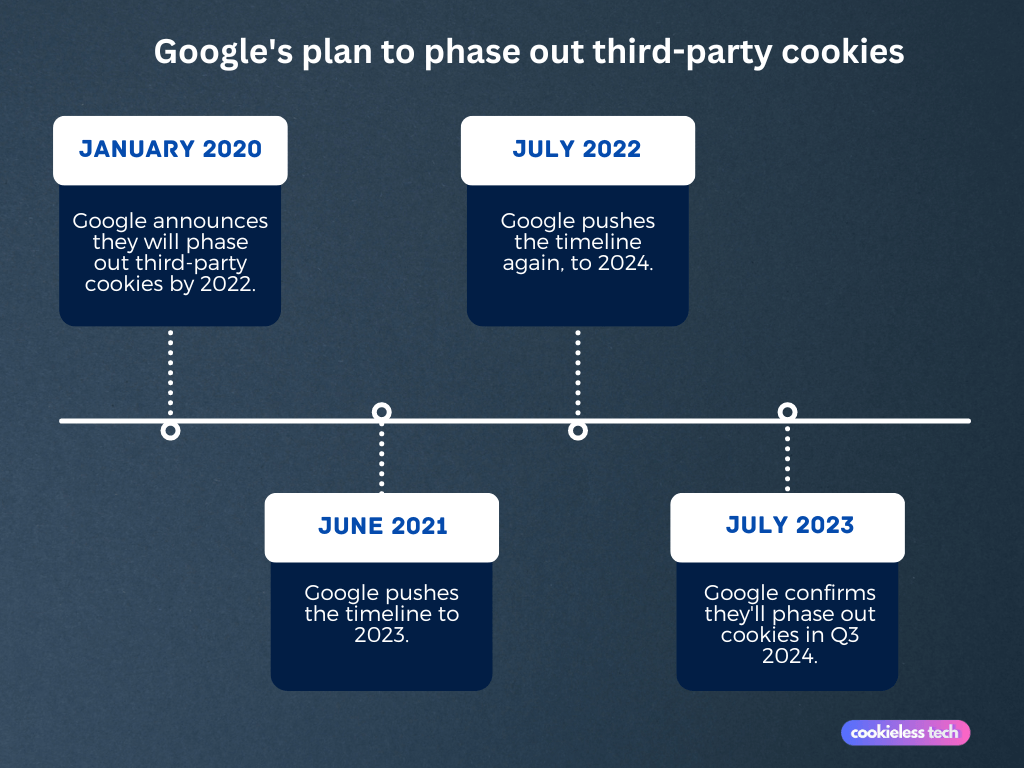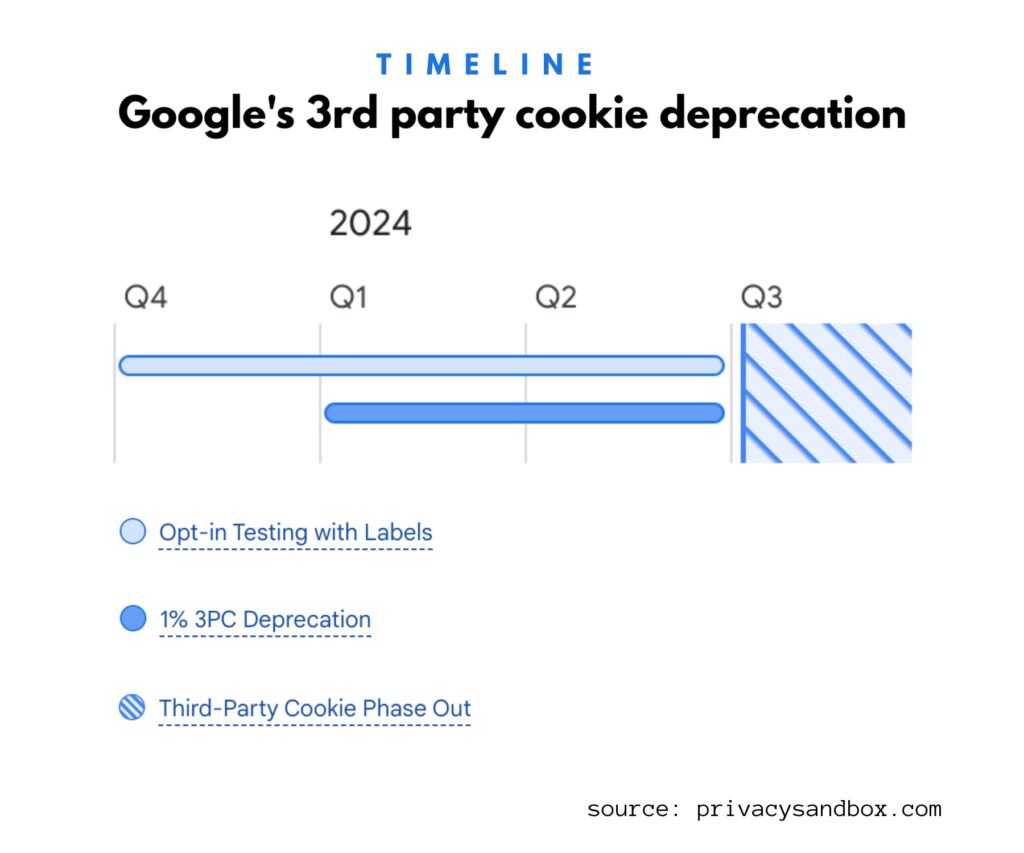
When is Google phasing out third-party cookies?
TL:DR: In the past, Google has set a timeline for phasing out third-party cookies, although it has been subject to delays. Right now this process is underway, and it seems unlikely that there will be any further postponements. One thing is for sure, very soon third-party cookies will be thing of the past, and marketers must be ready.
Google Chrome will block third-party cookies by default in
The countdown above is based on Google’s plan to phase out cookies in Q3 2024. According to their plan this will happen over a two-month period, which means that by the end of September 2024 Chrome will likely no longer support third-party cookies for 100% of their users.
Google goes cookieless: the timeline of their announcements
Google first announced its intention to phase out third-party cookies in January 2020, with the initial plan to make the switch by 2022. However, the company later postponed this date twice. The first delay was announced on June 24, 2021, pushing the phase-out to 2023. The second delay was announced on July 27, 2022, further pushing the phase-out to the second half of 2024.

The current timeline, as of now, is to begin phasing out third-party cookies in Chrome in three stages.
Stage 1 (opt-in)
Stage 1 is set to start in Q4 2023 on an opt-in basis and for testing purposes.
Stage 2 (sampled rollout)
Stage 2 is set to start in Q1 2024 and will affect 1% of internet traffic on Chrome.
Stage 3 (full cookie deprecation)
Stage 3 is when things get real. Over a period of two months Google will gradually bring the percentage of traffic for which third-party cookies are blocked by default all the way to 100%.
No more cookies baby.

Why Marketers Should Prepare for a Cookieless Future Today
The phasing out of third-party cookies will definitely have a significant impact on digital marketing strategies, from tracking to retargeting, from affiliate sales to audience segmentation. While there are some challenges ahead, t’s important to note that the end of third-party cookies doesn’t mean the end of digital marketing. Instead, it’s a shift towards a more privacy-focused era. This change is a call for marketers to adapt their strategies and embrace new methods of reaching their audience.
Rather than waiting for third-party cookies to become obsolete, marketers should start preparing for a cookieless future today. This preparation could involve exploring alternative targeting methods, such as contextual advertising, first-party data collection, or predictive analytics.
In a cookieless world, marketers will need to be more creative and strategic in how they reach and engage their audiences. But with change comes opportunity. Those who can adapt and innovate in this new landscape will be well-positioned to succeed.
What happens when Chrome deprecates cookies
Already today Safari and Firefox block third-party cookies by default. Those browsers combined have a 24% market share, which means that already today we are sort of living in a cookieless environment. When Chrome phases them out to, you can expect around 90% of web traffic to take place on cookie-free browsers, and likely approaching 100% in the following months.
Just how it happened with GDPR, which caught lots of companies unprepared and rushing to implementing solutions at the last moment, there is the risk that a lot of businesses will only take actions when it’s already too late. This is a great opportunity for marketers and data specialists to implement today solutions and set up that will work in a cookieless setting.
How to get ready
While this is a broad topic and this list may not be exhaustive, here are some of the most important steps you can take today to get ready for a cookieless world.
- Review what first-party data you collect and optimize those processes.
- Evaluate the cookieless tracking solution that works best for you.
- If you stick to Google Analytics 4, make sure it is set up with server-side tracking.
- Review which software, beyond user analytics, you’re currently using that relies on third-party cookies.
- Look into new ways to segment your audiences based on first-party data or other sources.